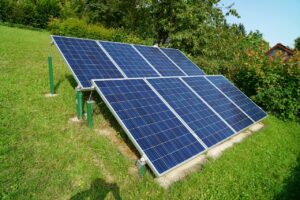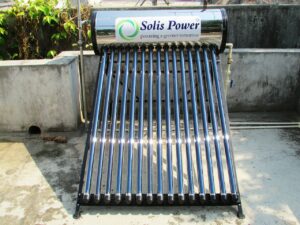Uncover the Essential Insights on Solar Energy
- Thoroughly Analyze the 12 Benefits & Drawbacks of Solar Energy
- Gain a Complete Understanding of Solar Energy
- Seamless Installation: Solar Lights for Residential and Outdoor Spaces
- Explore the Major Benefits of Embracing Solar Energy
- Harnessing Solar Energy: Your Pathway to Sustainable Home Energy Solutions
- Comprehensive Guide to Home Solar Batteries: Enhancing Energy Storage
- Proven Techniques for Storing Solar Energy Effectively at Home
- The Ultimate Guide to Heating Your Pool with Solar Panels
- In-Depth Evaluation of Nuclear Energy's Pros and Cons
- Exploring the Key Benefits of Nuclear Energy
- Decoding the Process: How Solar Panels Produce Electricity
- Assessing the Effects of Reduced Sunlight on Solar Energy Generation
- Analyzing the Advantages and Disadvantages of Wind Energy
- Identifying the Key Benefits of Wind Energy for Sustainable Power
- A Critical Look at the Pros and Cons of Hydropower for Energy Solutions
Thoroughly Analyze the 12 Benefits & Drawbacks of Solar Energy
As a homeowner contemplating the installation of solar panels, it is vital to thoroughly understand the benefits and drawbacks associated with solar energy. This knowledge will serve as a crucial foundation for your decision-making process. We will explore several key factors that significantly impact your choices regarding solar energy systems. One important component is the solar watt energy manager, an advanced control unit engineered for effective energy management in residential settings. This sophisticated device monitors both energy generation and energy consumption, offering a myriad of advantages that bolster energy efficiency in your home.
The discourse surrounding nuclear energy showcases the intricate complexities inherent in renewable energy sources. Advocates and opponents of nuclear power fervently defend their positions, illuminating various pros and cons. By gaining a comprehensive understanding of these advantages and disadvantages, you empower yourself to make informed decisions about your energy consumption and sustainable practices, ensuring a responsible and eco-conscious approach.
Although solar energy systems are typically user-friendly, challenges may emerge, particularly concerning limited installation space and the necessity for specific configurations to optimize performance. Homeowners require suitable access, such as an adequate roof or a spacious backyard, to effectively install solar arrays. For residents of apartments or condos, the practicality of installing a personal solar array may be significantly diminished, often necessitating collaboration with property management to explore the feasibility of shared solar solutions.
The environmental advantages of solar energy are irrefutable; it plays a central role in the creation of green buildings, which rely on renewable resources such as solar, wind, and geothermal energy. This transition aids in reducing society's dependence on fossil fuels, leading to a substantial decrease in our carbon footprint. However, the placement of solar installations is of utmost importance; nearby trees or structures can obstruct sunlight, adversely affecting efficiency. Homeowners must carefully consider their architectural designs, as some may not adequately support solar panel installations, necessitating thoughtful planning and assessment.
Recent updates reveal that Vietnam intends to reduce its feed-in tariffs for rooftop solar installations by as much as 38% next month, a strategic move aimed at easing the burden on the nation's power grid. According to Dai Doan Ket newspaper, Hoang Tien Dung, who leads the Ministry of Industry and Trade's Electricity and Renewable Energy Bureau, stated that the new tariffs will range from US$0.052 to US$0.058 per kilowatt-hour, depending on the system size.
If your energy bill indicates significant potential for improvement, consider embracing solar energy as a viable solution. By harnessing the sun's abundant energy, you can power your home while potentially lowering or even eliminating reliance on the traditional power grid. Furthermore, solar energy systems generally incur minimal maintenance costs throughout their lifespan, making them an appealing option for environmentally conscious homeowners seeking sustainability.
Seamless Installation: Solar Lights for Residential and Outdoor Spaces
Whether you are utilizing solar energy in a motorhome, at a campsite, or within your home, most solar-powered devices are designed for portability and ease of use. You can choose to invest in individual solar products such as solar lanterns and decorative fairy lights, or enhance your flexibility with portable solar panels and batteries to create a versatile solar system that suits your specific needs and lifestyle.
Among the leading options in the solar generator market is the Suaoki model, celebrated for its affordability and straightforward setup. This generator offers three distinct charging methods, enabling you to recharge it outdoors using the Suaoki 60W solar panel or through any compatible solar panel, AC plug, or DC input found in your vehicle. With a battery capacity of 444Wh, this compact generator weighs just over 12 pounds, making it an exceptional companion for camping trips, agricultural tasks, fishing, hunting, or construction sites.
Now that you’re familiar with the foundational aspects of solar energy, consider engaging in enjoyable solar projects with children that are both educational and easy to set up at home. For example, constructing a solar oven can turn a sunny day into an opportunity to prepare delightful meals such as pizza, hot dogs, or cheesy nachos. With guidance from instructional videos, you can transform a simple lesson into a fun afternoon project that the entire family can enjoy together.
A recent solar lighting project showcased the versatility of portable solar lights. A client required innovative lighting solutions for various purposes, including car parks and nearby construction sites. Rather than excavating trenches for stationary lights, they opted for portable solar lights, which could be easily relocated by forklifts. This inventive solution ensured that both the parking areas and the construction site remained well-lit, underscoring the practicality of moving away from conventional lighting methods.
Explore the Major Benefits of Embracing Solar Energy
The realm of solar energy is rich with valuable information, yet misconceptions can cloud the understanding of its potential. In this segment, we will thoroughly investigate the myriad advantages and disadvantages associated with installing solar panels and the solar energy industry as a whole. The benefits of solar energy span various dimensions, encompassing financial, social, and environmental advantages. Some of these benefits are widely recognized, while others may not be immediately apparent; we will unpack each aspect in detail to provide a comprehensive understanding.
Ultimately, solar energy presents substantial benefits in comparison to its drawbacks, securing its position as the most accessible form of renewable energy available globally. From residential homes to commercial enterprises, the integration of solar energy systems can significantly reduce electricity bills and diversify energy sources, preparing for potential emergencies. Moreover, with continuous advancements in technology, solar energy systems are becoming increasingly efficient and cost-effective, facilitating broader adoption by homeowners and business owners alike.
Explore these insightful videos featuring experts discussing the pros and cons of hydropower; they delve into the ongoing debate surrounding renewable energy sources. Environmental activists frequently raise concerns about dam construction, sparking discussions about the long-term viability of hydropower. Will we prioritize renewable energy sources like solar, or will we continue to rely on fossil fuels? Is hydropower a cost-effective solution, and what disadvantages might arise from its implementation?
To summarize, the Hi-mo3 half-cut bifacial PERC module series has set the standard in advancing monocrystalline PERC technology. This series is distinguished by its high power output, exceptional yield, and low capital expenditure (CapEx). The Hi-mo3 employs half-cut technology to reduce the operating current of the solar cells, effectively minimizing resistive losses and enhancing power output by an average of 5-10 watts. With bifacial technology, the front panel power reaches 320W (60-cell), achieving a bifaciality ratio exceeding 75%.

Harnessing Solar Energy: Your Pathway to Sustainable Home Energy Solutions
Determining which renewable energy source stands out as the most advantageous can often be a complex endeavor. Solar energy, generated through photovoltaic cells, is increasingly being embraced by homeowners and businesses alike. The installation of solar panels presents numerous benefits, including reduced energy costs and heightened energy independence. As a stationary energy solution that features no moving parts, solar panels offer a dependable means of harnessing clean energy, making significant contributions to your sustainability objectives.
Comprehensive Guide to Home Solar Batteries: Enhancing Energy Storage
It is essential for every homeowner to have the opportunity to harness solar energy on their property. In many regions, this right is safeguarded by solar access laws, which prevent local governments and homeowners' associations (HOAs) from obstructing solar energy installations. However, these laws are not universally enforced, and even in compliant areas, some HOAs may still impose outdated regulations that hinder homeowners' access to solar technology. This thorough guide aims to assist you in navigating HOA objections regarding your solar installation, presenting effective strategies to enhance the solar-friendliness of your home.
While solar energy systems offer a variety of advantages and disadvantages, if this article has piqued your interest, our 6-step guide could prove beneficial in identifying the ideal solar panels tailored to your home. This comprehensive guide encompasses everything from assessing roof suitability to selecting the appropriate type of solar panels, understanding costs, discovering savings opportunities, and acquiring maintenance tips.
For those considering battery backup options, companies like SolarCity provide Tesla Powerwall batteries, engineered to deliver backup energy during outages and natural disasters. The Powerwall is compact, stackable, and features a built-in inverter, ensuring seamless integration with SolarCity's solar power systems.
Historically, solar energy storage has presented challenges, as battery technology has lagged behind production technology. While we can efficiently generate substantial amounts of electricity, storing that energy for nighttime or cloudy day usage remains a significant hurdle. Many homeowners find it difficult to manage energy storage while also selling surplus energy back to utility companies.
Proven Techniques for Storing Solar Energy Effectively at Home
Recognized as one of the most efficient methods to generate renewable energy for residential buildings, solar energy systems are cost-effective, easy to install, and require minimal maintenance. However, it is crucial to acknowledge that this energy solution may not be suitable for every situation. As with any energy source, solar energy presents both benefits and challenges. Before deciding to transition to solar for your home or business, it is prudent to look beyond marketing claims and grasp the essential facts.
The sun generates an astonishing amount of energy; it takes roughly 8 minutes for its rays to travel the multi-million-mile distance to reach Earth. Remarkably, each hour, enough solar energy strikes the Earth to power the entire planet for a full year. This staggering potential raises questions about how to effectively harness it for personal use. The answer lies in the deployment of solar panels.
The 2018 Solar Power Portal Awards are now accepting entries, as highlighted by Clean Energy News. This prestigious event has become a key highlight in the UK renewables industry calendar, celebrating its sixth year with a rebranding initiative. The Solar Power Portal and Energy Storage News will unite to honor the flourishing battery storage market both domestically and internationally.
By employing distributed energy generation, energy efficiency improves, and waste diminishes, as the energy generators are situated closer to consumers. Utilizing renewable energy sources like solar and wind to generate electricity in homes and businesses enhances the practicality of this model. Smaller microgrid units are less likely to experience simultaneous failures compared to larger systems, making distributed generation systems more reliable. Moreover, the impact of failure is less severe for a small unit than for a larger counterpart.
The Ultimate Guide to Heating Your Pool with Solar Panels
The applications of solar energy extend well beyond solar panels; solar water heaters are frequently utilized to heat and store water in colder climates. These systems operate by absorbing the sun's heat through solar thermal collectors. The efficiency of solar water heaters is highly contingent upon sunlight availability, enabling them to effectively meet demand for warm water during sunny days.
Various solar panel systems can also be harnessed for water heating applications. Thermal solar solutions provide environmentally friendly alternatives to gas boilers and conventional water heaters, offering a sustainable method for heating water effectively.
In the realm of solar science kits for children, exciting advancements have emerged in the solar toy market. With scalable technology, miniature solar-powered products are gaining popularity, providing engaging and educational experiences. These solar kits can foster curiosity and understanding of solar energy concepts among kids, paving the way for a greener future.
To introduce the concept of ‘solar thermal energy’ to children, it’s vital to recognize that the most commonly employed solar technologies today are solar water heaters and pool heaters, which operate based on this principle. Although solar panels often come to mind when discussing solar energy, thermal solar solutions offer a cost-effective entry point for those eager to adopt solar technologies.
Solar panels are primarily designed to reduce energy costs and power household appliances and devices; however, they also hold potential for various other applications. This includes controlling your pool and shower heaters, as well as charging devices such as phones, radios, laptops, and more. The possibilities of solar energy are remarkable, offering an expansive range of products that can benefit from its renewable power.
In-Depth Evaluation of Nuclear Energy's Pros and Cons
In today’s society, there is a collective drive towards green and renewable energy to bolster environmental sustainability. Solar panels are frequently the preferred solution for individuals seeking clean energy options. However, much like any energy solution, the installation of solar panels (or solar-integrated products) is accompanied by its share of advantages and disadvantages. This section will thoroughly explore the essential pros and cons of solar energy systems.
As with any energy source, the adoption of solar energy comes with both benefits and challenges. The high initial costs can be a significant drawback; while solar energy can lead to lower electricity bills, the upfront expenses for equipment and installation can often exceed $20,000. Additionally, powering devices that operate on direct current (DC) may incur higher costs, further complicating the financial landscape.
Nuclear power generation involves a complex, multi-step process designed to safely contain energy and its associated negative byproducts. This intricate methodology contributes to the array of advantages and disadvantages related to nuclear energy production.
While solar energy does present its drawbacks, extensive research is essential to enhance the technology before it can be fully trusted. Nonetheless, the unsustainable nature of fossil fuel consumption highlights the urgency of transitioning towards renewable energy solutions. By addressing the limitations of solar power, society can strive toward a more sustainable energy future through technological advancements and strategic planning.
Exploring the Key Benefits of Nuclear Energy
Despite the controversies and potential disadvantages associated with nuclear energy, there are notable advantages when compared to other energy production methods. Nuclear energy generation is typically low-cost, reliable, and does not emit greenhouse gases, making it an appealing option in the quest for cleaner energy solutions.
Various methodologies are employed to ensure adequate power generation and meet load demands. This article will take a closer look at solar energy, emphasizing its advantages and disadvantages in comparison to other energy sources such as thermal, wind, and nuclear energy.
One reason nuclear energy often faces criticism is due to its associated drawbacks, which include uranium mining, water pollution, waste disposal, leaks, and safety concerns surrounding reactor failures. Understanding these complexities is crucial in forming a well-rounded perspective on nuclear energy's role in our energy landscape.
Given the numerous benefits and drawbacks of nuclear energy, it is understandable why it remains a contentious issue. It is essential to educate yourself on this topic to develop an informed opinion regarding the future utilization of nuclear energy.
Decoding the Process: How Solar Panels Produce Electricity
Many electricity suppliers offer buy-back programs for surplus energy produced by solar panels and other home appliances. These programs often feature attractive buy-back rates, allowing homeowners to recoup their initial investment over time. One of the major advantages of solar panels is their low maintenance costs, providing peace of mind for homeowners.
Unlike some other costly home projects, the expenses related to solar panel installations are primarily front-loaded. Once the installation is completed, homeowners can enjoy long-term energy savings without the burden of ongoing maintenance expenses, making it a financially sound investment.
Installing rooftop solar panels typically involves the placement of a mounting system, or “rack,” onto your roof. However, certain roofing materials found in older or historic homes, such as slate or cedar tiles, can present challenges for solar installers, potentially complicating the installation process. Additionally, many residential and apartment buildings feature skylights or other structures on their roofs, further complicating the installation process and necessitating careful planning.
Despite these challenges, the widespread adoption of solar power in the United States is unlikely to be impeded in the long term. G&H Sustainability’s innovative efforts to deliver a groundbreaking project for Asda have garnered recognition, being shortlisted for a prestigious national award. This project, which involves the installation of 984 photovoltaic panels utilizing an innovative roof mounting system, is acknowledged in the Commercial Rooftop category of the 2014 Solar Power Portal Awards.
SolarCity's solar panels are designed to surpass industry standards, boasting a lifespan that outlasts many competitors by an impressive 10 years. Their solar system incorporates integrated front skirts, diverted vents, and hidden clamps and rail ends, resulting in a polished and visually appealing installation. Furthermore, all roof work and system repairs associated with SolarCity's solar panels are covered at no additional expense, adding further value to this investment.
Assessing the Effects of Reduced Sunlight on Solar Energy Generation
Solar panels effectively capture sunlight and convert it into usable energy for homes, buildings, and even swimming pools. Each solar panel is comprised of photovoltaic cells that transform sunlight into electricity, which can power a variety of appliances and systems within your home.
In a significant move towards sustainability, the city of Orlando, Florida, has committed to achieving a carbon-neutral government by 2030. This ambitious plan includes operating its vehicle fleet on 100% renewable energy and reducing overall energy consumption by






Comments are closed